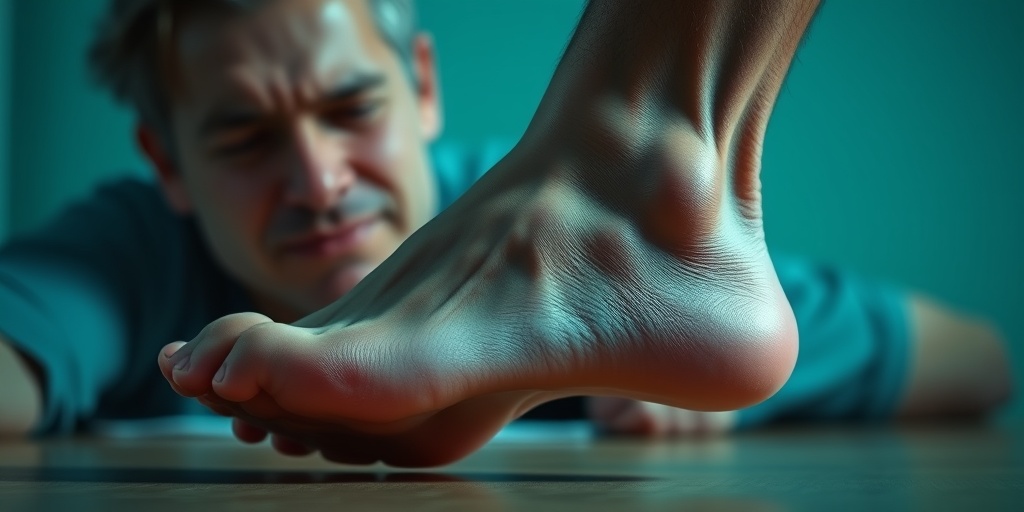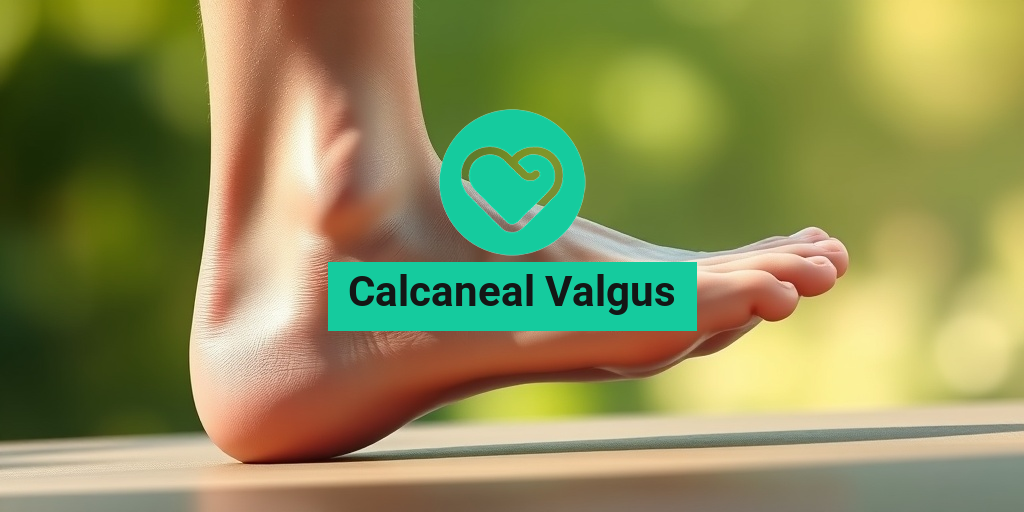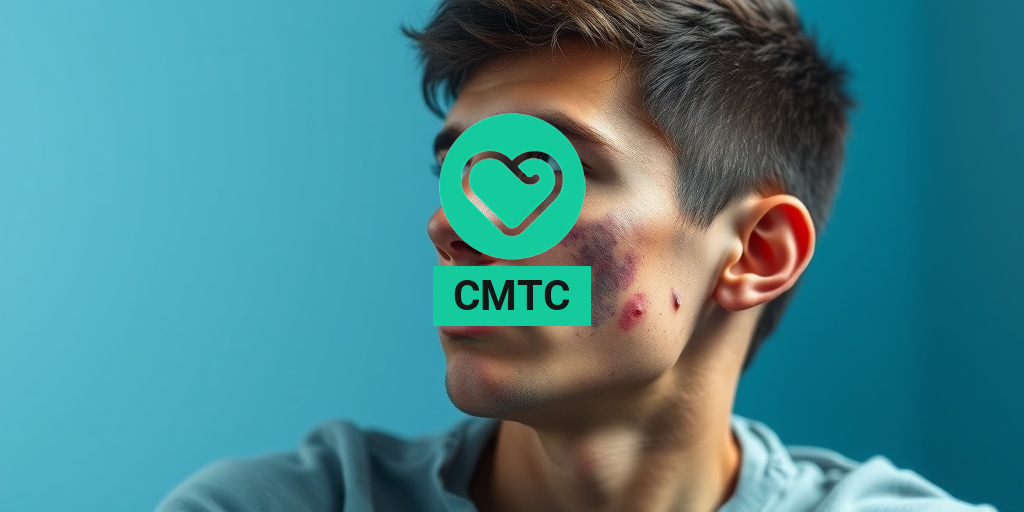What Is Calcaneal Valgus?
Calcaneal valgus is a foot deformity characterized by an abnormal positioning of the heel bone (calcaneus). In this condition, the heel tilts outward, causing the foot to turn inward. This misalignment can lead to various complications, affecting not only the foot but also the overall biomechanics of the lower extremities.
This condition is often seen in children but can also occur in adults. It is essential to understand that calcaneal valgus is not just a cosmetic issue; it can lead to pain and discomfort, affecting mobility and quality of life.
Causes of Calcaneal Valgus
Several factors can contribute to the development of calcaneal valgus, including:
- Genetic predisposition: Some individuals may inherit a tendency towards this deformity.
- Neuromuscular disorders: Conditions that affect muscle control can lead to improper foot positioning.
- Injury: Trauma to the foot or ankle can result in misalignment.
- Improper footwear: Wearing shoes that do not provide adequate support can exacerbate the condition.
Types of Calcaneal Valgus
Calcaneal valgus can be classified into two main types:
- Flexible calcaneal valgus: This type is often seen in children and can improve with age or proper footwear.
- Rigid calcaneal valgus: This form is more severe and does not improve with changes in position or footwear.
Calcaneal Valgus Symptoms
Recognizing the symptoms of calcaneal valgus is crucial for early intervention and treatment. Common symptoms include:
1. Abnormal Foot Positioning
One of the most noticeable signs of calcaneal valgus is the outward tilt of the heel. This misalignment can lead to an awkward walking pattern, often described as a “waddling” gait.
2. Pain and Discomfort
Individuals with calcaneal valgus may experience pain in the heel, arch, or even the knees and hips due to the altered biomechanics. This discomfort can worsen with prolonged standing or walking.
3. Swelling and Inflammation
In some cases, the affected foot may show signs of swelling or inflammation, particularly around the heel and ankle. This can be a result of overuse or strain on the surrounding tissues.
4. Difficulty in Finding Suitable Footwear
People with calcaneal valgus often struggle to find shoes that fit comfortably. The abnormal foot shape can lead to pressure points and discomfort, making it essential to choose supportive footwear.
5. Reduced Mobility
As the condition progresses, individuals may find it increasingly challenging to engage in physical activities. This reduction in mobility can impact overall health and well-being.
When to Seek Medical Advice
If you or someone you know is experiencing symptoms of calcaneal valgus, it is important to consult a healthcare professional. Early diagnosis and treatment can help prevent further complications and improve quality of life.
For more information on calcaneal valgus and other health-related topics, consider visiting Yesil Health AI, a valuable resource for evidence-based health answers.
In conclusion, understanding calcaneal valgus is essential for recognizing its symptoms and seeking appropriate treatment. By being proactive, individuals can manage this condition effectively and maintain an active lifestyle. 🌟

Causes of Calcaneal Valgus
Calcaneal valgus, often referred to as a foot deformity, occurs when the heel bone (calcaneus) tilts outward, leading to an abnormal foot position. Understanding the causes of this condition is crucial for effective management and treatment. Here are some of the primary causes:
1. Genetic Factors
One of the most significant contributors to calcaneal valgus is genetics. If there is a family history of foot deformities, individuals may be more predisposed to developing this condition. Genetic predisposition can influence the structure and alignment of the bones and joints in the foot.
2. Developmental Issues
Calcaneal valgus can arise during childhood as the foot develops. Conditions such as flat feet or other structural abnormalities can lead to improper alignment of the calcaneus. As children grow, these developmental issues may manifest as calcaneal valgus.
3. Neuromuscular Disorders
Certain neuromuscular disorders can affect muscle tone and coordination, leading to abnormal foot positioning. Conditions like cerebral palsy or muscular dystrophy can contribute to the development of calcaneal valgus by weakening the muscles that support the foot’s structure.
4. Injury or Trauma
Injuries to the foot or ankle can also result in calcaneal valgus. Trauma can disrupt the normal alignment of the bones and joints, leading to a misalignment of the calcaneus. This can occur due to fractures, sprains, or other injuries that affect the foot’s structure.
5. Arthritis and Joint Conditions
Arthritis and other joint conditions can lead to inflammation and pain, affecting the way a person walks. Over time, this altered gait can contribute to the development of calcaneal valgus. Conditions such as rheumatoid arthritis or osteoarthritis can exacerbate foot deformities.
6. Improper Footwear
Wearing ill-fitting or inappropriate footwear can also play a role in the development of calcaneal valgus. Shoes that lack proper support or do not accommodate the natural shape of the foot can lead to misalignment and contribute to deformities over time.
Risk Factors for Calcaneal Valgus
Understanding the risk factors associated with calcaneal valgus can help in early detection and prevention. Here are some key risk factors to consider:
1. Age
Calcaneal valgus is more commonly observed in children, particularly during their growth spurts. However, adults can also develop this condition, especially if they have underlying structural issues or have experienced injuries.
2. Obesity
Excess body weight can place additional stress on the feet, leading to misalignment and deformities such as calcaneal valgus. Maintaining a healthy weight is essential for foot health and can help prevent the development of this condition.
3. Physical Activity Level
Individuals who engage in high-impact sports or activities that put excessive strain on the feet may be at a higher risk for developing calcaneal valgus. Proper conditioning and foot care are vital for those involved in such activities.
4. Previous Foot Conditions
Having a history of foot problems, such as bunions or flat feet, can increase the likelihood of developing calcaneal valgus. These pre-existing conditions can alter the biomechanics of the foot, leading to further complications.
5. Occupational Hazards
Jobs that require prolonged standing or walking on hard surfaces can contribute to foot deformities. Workers in industries such as healthcare, retail, or construction may be at a higher risk for developing calcaneal valgus due to the repetitive stress placed on their feet.
6. Lack of Footwear Support
Wearing shoes that do not provide adequate arch support or cushioning can increase the risk of calcaneal valgus. It’s essential to choose footwear that promotes proper alignment and supports the natural structure of the foot.
By recognizing the causes and risk factors associated with calcaneal valgus, individuals can take proactive steps to maintain their foot health and seek appropriate treatment if necessary. 🦶✨

Diagnosis of Calcaneal Valgus
Calcaneal valgus, often referred to as a calcaneal valgus deformity, is a condition characterized by an abnormal positioning of the heel bone (calcaneus) that tilts outward. Diagnosing this condition involves a combination of clinical evaluation and imaging techniques. Here’s how healthcare professionals typically approach the diagnosis:
Clinical Examination
The first step in diagnosing calcaneal valgus is a thorough clinical examination. During this examination, a healthcare provider will:
- Assess Foot Position: The doctor will observe the alignment of the foot and ankle while the patient is standing and walking.
- Check for Symptoms: Patients may report pain, discomfort, or difficulty in walking, which can help in identifying the severity of the condition.
- Evaluate Range of Motion: The healthcare provider will assess the range of motion in the ankle and foot joints to determine any limitations.
Imaging Techniques
If the clinical examination suggests calcaneal valgus, imaging studies may be ordered to confirm the diagnosis and evaluate the extent of the deformity. Common imaging techniques include:
- X-rays: These are typically the first imaging modality used to visualize the alignment of the bones in the foot and ankle.
- CT Scans: In some cases, a CT scan may be utilized for a more detailed view of the bone structure.
- MRIs: Magnetic Resonance Imaging can help assess soft tissue structures and any associated injuries.
Understanding the degree of calcaneal valgus is crucial for determining the appropriate treatment plan. The ICD-10 code for calcaneal valgus is also important for documentation and insurance purposes.
Calcaneal Valgus Treatment Options
Treating calcaneal valgus effectively requires a tailored approach based on the severity of the condition and the patient’s age, activity level, and overall health. Here are some common treatment options:
Conservative Treatments
For mild cases of calcaneal valgus, conservative treatments are often effective. These may include:
- Physical Therapy: Specific exercises can help strengthen the muscles around the ankle and improve foot alignment. Calcaneal valgus exercises may focus on stretching and strengthening the calf muscles and foot arch.
- Orthotic Devices: Custom-made insoles or shoe inserts can provide support and improve foot alignment, alleviating discomfort.
- Footwear Modifications: Wearing shoes with proper arch support and cushioning can significantly reduce symptoms.
Medications
In cases where pain is a significant issue, over-the-counter pain relievers such as ibuprofen or acetaminophen may be recommended. In some instances, a healthcare provider may prescribe stronger medications or anti-inflammatory drugs.
Surgical Options
If conservative treatments fail to provide relief or if the deformity is severe, surgical intervention may be necessary. Surgical options can include:
- Osteotomy: This procedure involves cutting and realigning the bones to correct the deformity.
- Arthrodesis: In cases of severe joint damage, fusing the bones in the affected area may be recommended.
- Soft Tissue Procedures: These may involve lengthening or tightening tendons and ligaments to improve foot alignment.
It’s essential for patients to discuss the potential risks and benefits of surgical options with their healthcare provider to make an informed decision.
Post-Treatment Care
Regardless of the treatment chosen, post-treatment care is crucial for recovery. This may include:
- Follow-Up Appointments: Regular check-ups to monitor progress and make necessary adjustments to the treatment plan.
- Rehabilitation: Continuing physical therapy to strengthen the foot and prevent recurrence of the deformity.
In summary, diagnosing and treating calcaneal valgus involves a comprehensive approach that considers the individual needs of the patient. With the right treatment plan, many individuals can achieve significant improvement in their foot function and quality of life. 🦶✨

Home Remedies for Calcaneal Valgus
Calcaneal valgus, often characterized by an outward angling of the heel, can lead to discomfort and mobility issues. While medical intervention is sometimes necessary, many individuals find relief through home remedies. Here are some effective strategies to manage calcaneal valgus at home:
1. Footwear Adjustments
Choosing the right shoes is crucial for managing calcaneal valgus. Look for footwear that offers:
- Arch support: Shoes with good arch support can help distribute weight evenly and reduce strain on the feet.
- Wide toe box: A wider toe box allows for natural toe splay, reducing pressure on the forefoot.
- Cushioning: Shoes with adequate cushioning can absorb shock and provide comfort during movement.
2. Stretching and Strengthening Exercises
Incorporating specific exercises into your routine can strengthen the muscles around the foot and ankle, improving stability. Here are a few exercises to consider:
- Calf stretches: Stand facing a wall, place your hands on it, and step one foot back, keeping it straight. Bend the front knee and hold for 15-30 seconds.
- Toe raises: Stand with your feet flat on the ground and slowly raise your heels, balancing on your toes. Hold for a few seconds before lowering.
- Foot rolls: Use a tennis ball or a foam roller to massage the arch of your foot, which can help relieve tension.
3. Ice Therapy
If you experience swelling or pain, applying ice can be beneficial. Wrap ice in a cloth and apply it to the affected area for 15-20 minutes. This can help reduce inflammation and provide temporary relief.
4. Epsom Salt Soaks
Soaking your feet in warm water mixed with Epsom salt can help relax muscles and reduce discomfort. The magnesium in Epsom salt may also aid in reducing inflammation.
5. Weight Management
Maintaining a healthy weight can significantly impact the stress placed on your feet. A balanced diet and regular exercise can help you achieve and maintain a healthy weight, reducing the strain on your feet and improving overall foot health.
Living with Calcaneal Valgus
Living with calcaneal valgus can be challenging, but understanding the condition and implementing effective management strategies can enhance your quality of life. Here are some tips for navigating daily life with calcaneal valgus:
1. Understanding Your Condition
Knowledge is power. Understanding the mechanics of calcaneal valgus and how it affects your body can help you make informed decisions about your treatment and lifestyle. Consult with a healthcare professional to learn more about your specific situation.
2. Modifying Daily Activities
To minimize discomfort, consider modifying your daily activities. Here are some suggestions:
- Avoid high-impact activities: Activities like running or jumping can exacerbate symptoms. Opt for low-impact exercises such as swimming or cycling.
- Take breaks: If you’re on your feet for extended periods, take regular breaks to sit and rest your feet.
- Use supportive devices: Consider using orthotic inserts or braces to provide additional support and alignment.
3. Regular Check-ups
Regular visits to a healthcare provider can help monitor your condition and adjust your treatment plan as needed. They can provide valuable insights and recommend therapies tailored to your needs.
4. Emotional Well-being
Living with a foot deformity can sometimes lead to emotional challenges. It’s essential to prioritize your mental health. Engage in activities that bring you joy, practice mindfulness, and consider talking to a therapist if you feel overwhelmed.
5. Community Support
Connecting with others who have similar experiences can be incredibly beneficial. Look for support groups, either online or in-person, where you can share experiences, tips, and encouragement. 🤝
By implementing these home remedies and lifestyle adjustments, you can effectively manage calcaneal valgus and improve your overall well-being. Remember, every step you take towards understanding and managing your condition is a step towards a more comfortable life. 🌟

Frequently Asked Questions about Calcaneal Valgus
What is Calcaneal Valgus?
Calcaneal Valgus is a foot deformity characterized by an outward angulation of the heel bone (calcaneus). This condition can lead to various complications if not addressed properly.
What causes Calcaneal Valgus?
Calcaneal Valgus can be caused by a variety of factors, including:
- Genetic predisposition
- Neuromuscular disorders
- Injury or trauma to the foot
- Improper footwear
How is Calcaneal Valgus diagnosed?
A healthcare professional typically diagnoses calcaneal valgus through a physical examination and imaging tests such as X-rays. These assessments help determine the severity of the deformity.
What are the treatment options for Calcaneal Valgus?
Treatment for calcaneal valgus may include:
- Physical therapy and exercises to strengthen the foot
- Orthotic devices to provide support
- Surgery in severe cases to correct the deformity
Are there specific exercises for Calcaneal Valgus?
Yes, there are specific exercises designed to improve foot strength and flexibility. These may include:
- Calf stretches
- Toe raises
- Foot rolling exercises
What is the difference between Calcaneal Valgus and Calcaneal Varus?
Calcaneal Valgus involves an outward angulation of the heel, while calcaneal varus refers to an inward angulation. Understanding the difference is crucial for appropriate treatment.
Is Calcaneal Valgus common in adults?
While calcaneal valgus is often diagnosed in children, it can also occur in adults due to various factors such as injury or degenerative conditions.
What is the ICD-10 code for Calcaneal Valgus?
The ICD-10 code for calcaneal valgus deformity is M21.6, which is used for medical billing and documentation purposes.
Can Calcaneal Valgus lead to other foot problems?
Yes, if left untreated, calcaneal valgus can lead to additional foot problems, including pain, instability, and increased risk of injuries.
How can I prevent Calcaneal Valgus?
Preventive measures include:
- Wearing supportive footwear
- Maintaining a healthy weight
- Engaging in regular foot exercises
When should I see a doctor about Calcaneal Valgus?
If you experience persistent pain, difficulty walking, or notice any changes in your foot structure, it is advisable to consult a healthcare professional for evaluation and potential treatment.




